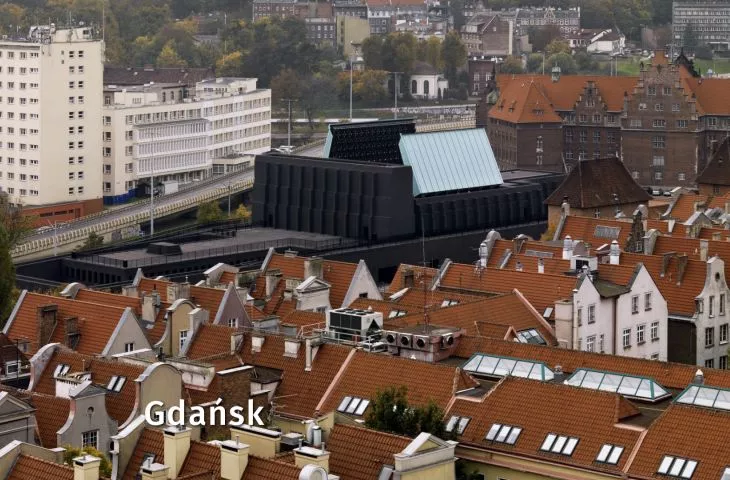The upcoming February issue of A&B will be dedicated to the architecture of Gdansk. In today's episode of "Coffee Break," we remind you of eight projects and realizations that have influenced the architectural face of this city in recent years.
Maritime Culture Center
Adjacent to the Gdansk Crane is the building of the Maritime Culture Center - a branch of the National Maritime Museum. Inscribed in the frontage on the banks of the Moltawa River, the building combines tradition (thanks to the use of hand-formed Gothic brick and monk's-mortar roof tiles) with modernity (transparent and reflectionless).
Maritime Culture Center, Gdansk, 2005-2012, proj.: Miroslaw Frąszczak Architektoniczna Pracownia Autorska
photo: Iwona Ba
European Solidarity Center
Located at Solidarity Square in Gdansk, clad in rusty corten sheet metal, the sculptural mass of the European Solidarity Center blends into the industrial backdrop of the shipyard.
European Solidarity Center, Gdansk, 2007-2014, proj.: FORT Design and Implementation Company
photo: Lukasz Widziszowski
Shakespeare Theater
The graphite monumental block of the Gdansk Shakespeare Theater, designed by Italian architect Renato Rizzi, stands out in the city's skyline. You can read more about this realization here.
Gdansk Shakespeare Theater, Gdansk, 2008-2014, design: Renato Rizzi
photo: Matteo Piazza
Energa Gdańsk Stadium
The amber-colored Energa Gdansk Stadium, built to host the 2012 European Football Championships, is clad with eighteen thousand polycarbonate tiles in six shades.
Energa Stadion Gdansk, Gdansk, 2008-2011, designed by Consortium Stadion Gdansk - RKW Rhode Kellermann Wawrowsky GmbH + Co. Kg. RKW Rhode Kellermann Wawrowsky Poland, HPP International Planungsgesellschaft mbH.
Photo: Asia Borowska
World War II Museum
The dynamic body of the Museum of World War II, according to the authors' assumptions, fitting into the silhouette of the city with its contemporary form, is to lead a kind of dialogue with the historic towers of churches and town halls of Gdansk. You can read more about the museum in Marta Kulawik's conversation with Jacek Droszcz, co-author of the building's design.
Museum of World War II, Gdansk, 2010-2017, proj.: Studio Kwadrat and A-PLAN bis
photo: Dawid Walczyna Camdrone
Granary Island
Granary Island, a former port warehouse district, is now gaining a new architectural face. You can read more about the development at the Gdansk marina in an article by Ewa Karendys[here].
Granary Island, Gdansk, proj.: KD Kozikowski Design, Studio Architektoniczne Kwadrat, RKW Rhode Kellermann Wawrowsky, Mąka Sojka Architekci
photo: tomek__c
Imperial Shipyard
The winning proposal for the development of the post-industrial site of the Imperial Shipyard, prepared by a consortium of Henning Larsen Architects, BBGK Architects and A2P2 architecture & planning, envisages the design of a new district - a multifunctional space with residential and service areas.
Imperial Shipyard, Gdansk, 2018, projet: Henning Larsen, BBGK Architects, A2P2 architecture & planning
© Henning Larsen
Rajska 8
Located in the historic center of Gdansk, this office and residentialcomplex designed by architects from JEMS studio, thanks to its red brick facade, refers to both the old city and post-war buildings of the city.
Rajska 8, Gdansk, 2019, proj.: JEMS Architekci
© JEMS Architekci
And you, what projects or realizations would you add to this list? Let us know in the comments.














